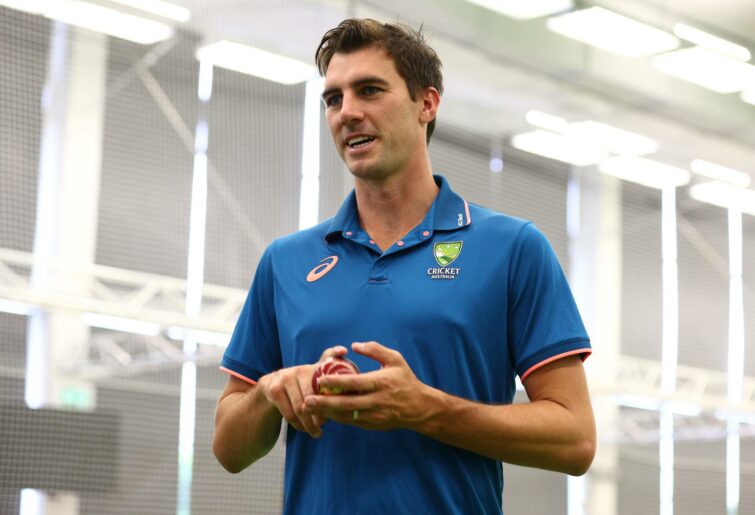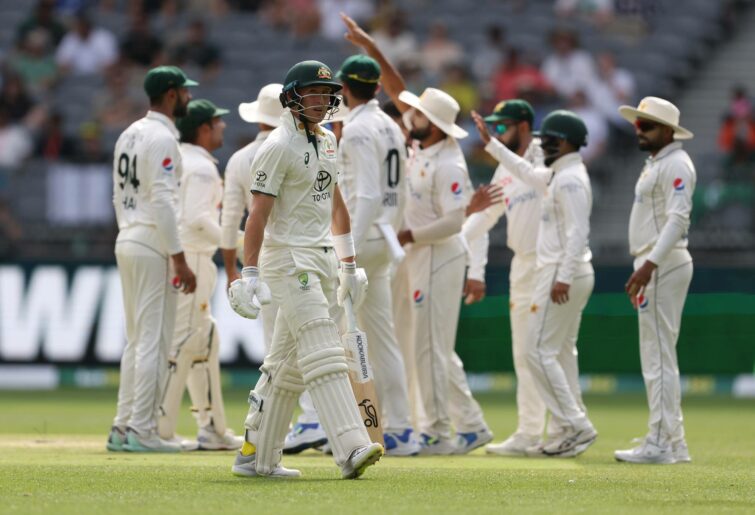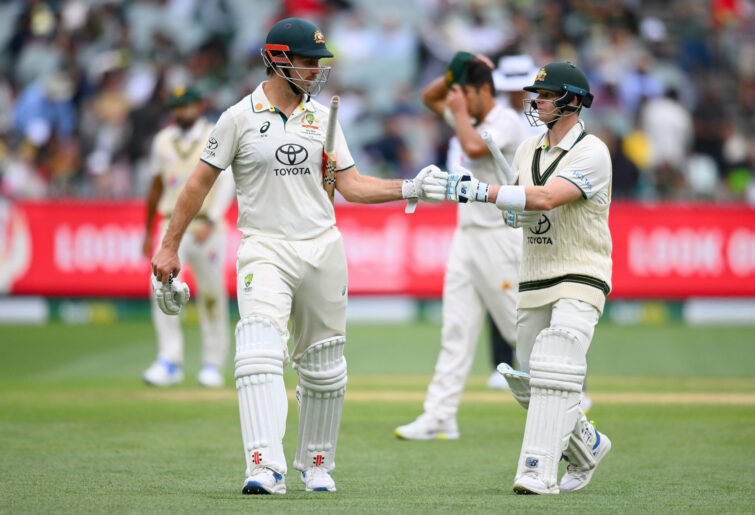MUST WATCH: JFM obliterates IPL bowling attack - even Bumrah! - for 15-ball 50... and keeps going
A six-laden, 27-ball 84 from Jake Fraser-McGurk to continue his outrageous debut IPL!
As the dust settles on one of the most exhilarating Test matches in history, our Test and ODI champion Australian team end the home summer with a surprisingly uncertain outlook heading into 2024.
As tempting as it may be to react to the landmark loss to the West Indies with “blow it up and start again”, there will be no selection alarm bells ringing in the Australian camp.
The fact is, had Cameron Bancroft, Matt Renshaw or even Marcus Harris been selected for this Test, Australia likely wins. This is true only because any combination of the best 13 or 14 Australian red-ball players should beat the eighth-ranked Test team most of the time.
Play the Gabba Test again with the same 22 players and Australian likely wins; a shock loss is not always a selection stumble.
This Australian team plays a brand of cricket based around patience, understanding the percentages and random distribution of potential outcomes, and relying on the fact that if they stay in the fight long enough and execute their skills, all while refusing to outwardly panic, they will usually come out on top by outlasting their opponents.
It’s a proven method, with an incredible recent track record. It’s not always pretty, and this brand of patience can often appear passive.
When it goes wrong, as it did in Brisbane, and several times in the Ashes and India last year, Australia look well off the pace. But the results speak for themselves – a Test win in India, a WTC Final victory, retaining the Ashes in England and an ODI World Cup title in 2023 alone.
Abandoning the calm, measured approach Australia have taken over the last two-plus years would be to abandon a proven winner. It won’t happen – try to find any extended interview with Andrew McDonald or Pat Cummins where they don’t refer to sticking to their process and ignoring the noise.

(Photo by Chris Hyde/Getty Images)
Where some concern deservedly lies, is the production of the Australian top seven with the bat. Only one of the current top seven reached triple figures this summer, with Travis Head scoring 119 in the first innings in Adelaide. That Australia could win four out of five Test matches while struggling to post the big scores is noteworthy, and speaks to the quality of the bowling attack.
There have been, mostly justifiably, questions marks of some form on almost all seven of the batters from the West Indies series.
Steve Smith seemingly put to rest, at least for now, doubts about his opening credentials with a calm and collected 91 not out as his team fell around him in Brisbane, the first Australian opener to carry his bat in some 13 years. But it won’t take much for the whispers to resurface if he struggles to covert that strong fourth innings knock in Brisbane into continued runs atop the order in New Zealand next month.
Usman Khawaja has been a shining light over the last two years, but at 37 years old, and only one game removed from retiring hurt after copping a bouncer to the helmet in Adelaide, the media cycle will never stray far from speculating about Usman’s long-term future.
Marnus Labuschagne, the batter perhaps most under the microscope this week, is an interesting case. Averaging just 28 for the five-Test home summer, Labuschagne has scored only one century in his last 35 innings. There were persistent murmurs as Marnus rode a wave of luck, seemingly lasting several years beginning with the “Summer of Marnus” in 2019-20, speculating as to when, or if, it would begin to run out.
Maybe we are simply seeing a reversion to the mean – a batter who has averaged a little over 43 across his 97 non-Test First Class matches returning 34.91 in calendar year 2023 and 35.25 so far in calendar year 2024 perhaps shouldn’t surprise nor alarm. Australia will, however, clearly need more runs at first drop moving forward.

Marnus Labuschagne looks dejected after being dismissed. (Photo by Paul Kane/Getty Images)
Cameron Green has, fairly or not, been the target of considerable interest from fans and commentators, displacing Smith from his long-term home at No.4 for the West Indies series. The jury may still be out on Green, who averages 32 at Test level after 39 innings.
But he has more than served his apprenticeship, averaging almost 57 in non-Test First Class matches, playing for Western Australia and Australia A. To move on from Green so soon, when he is both the single-best credentialled batter under 30 in the country, as well as remaining the most exciting prospect, would be catastrophically short-sighted.
Travis Head, despite a rare king pair in the Brisbane Test, remains Australia’s most secure middle order bat.
Alex Carey finds himself in the midst of an extended lean run, averaging 25 since the beginning of 2023. But his clean glovework, valuable first innings contribution in Brisbane, and emerging leadership within the playing group will see him given an extended period to return to the level of success he saw in 2022, where he averaged almost 50 with the blade.
Josh Inglis, already preferred to Carey in short-form cricket, will rightfully put pressure on Carey with a strong showing in the Shield over the next 12 months.
Which leaves us perhaps the most intriguing piece of the batting puzzle – team (and crowd) favourite Mitchell Marsh. After a breakout 2023, Marsh will be looking to extend his strong run of form across the three formats, with a challenging tour of New Zealand shaping to be a major test of Marsh’s long-term Test credentials.
Undroppable since a lone-hand hundred in the third Ashes Test last year, Marsh now faces the harsh examination of proving his 2023 is the norm rather than the aberration.
With a career First Class average under 35, and his bowling contributions carrying less significance with Green planted above him in the order, Marsh will be a batter under pressure in 2024 to maintain his increased output with the bat. Carrying two all-rounders (plus a keeper) in the top 7 carrying averages in the 30s is unlikely to form part of any long-term Australian strategy.

Mitchell Marsh and Steve Smith. (Photo by Morgan Hancock – CA/Cricket Australia via Getty Images)
It’s fun to consider the possibilities of what the Australia top 7 could look like – and how many games a refreshed top 7 may end up winning.
But the simple truth is, it’s most likely that Australia already has the best seven options plugged into the order, and any speculation on changes misses the point: this team knows that if they keep themselves in games and perform at anything resembling their best in the key moments, they are going to find themselves on the right side of the result most times out.
It’s boring at times, and robs us of one of our favourite pastimes – arguing over who is “next” – but it will continue to deliver results and isn’t going to be abandoned until that is no longer the case.
Off the back of one of the most exciting Tests ever played in Australia, Pat Cummins’ side heads to New Zealand with some serious questions to answer. February 29th can’t get here soon enough.